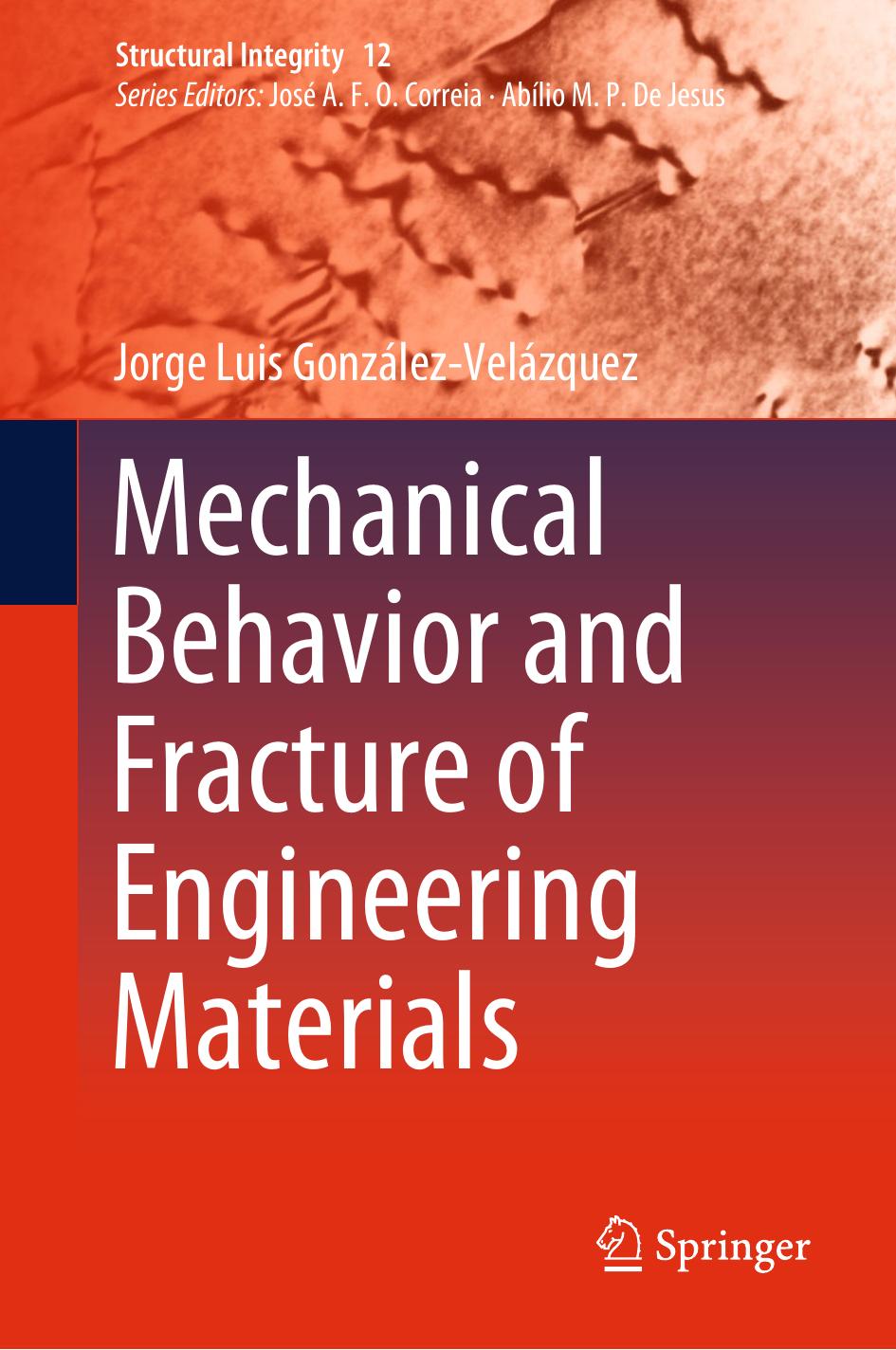Mechanical Behavior and Fracture of Engineering Materials by Jorge Luis González-Velázquez

Author:Jorge Luis González-Velázquez
Language: eng
Format: epub, pdf
ISBN: 9783030292416
Publisher: Springer International Publishing
The precipitates are classified depending on the coincidence of their crystalline planes with those of the matrix, as depicted in Fig. 4.27, as follows:(a)Coherent. The matrix planes match in all directions with those of the particle.
(b)Semi-coherent. The plane matching is partial.
(c)Incoherent. There is no plane match.
Fig. 4.27Schematic representation of precipitate coherency
As observed in Fig. 4.27, in coherency, the differences of lattice parameters between the particle and the matrix introduces an elastic deformation field around the particles. Such stress field difficult the dislocation movement by the attraction and repulsion forces between the dislocation and the particle stress fields.
The mechanism of fine particle strengthening depends on whether the particles can be cut by dislocations or not. When particles are cut by dislocations, a shear deformation, along with a step in each side of the particle are produced, as illustrated in Fig. 4.28. The deformation strains the surrounding matrix and the new surfaces created by the steps increase the work demand to produce the corresponding surface energy. Since the work is supplied by the load, the result is an increment on the stress required to plastically deform the material.
Fig. 4.28Mechanism of fine particle dislocation cutting
Download
Mechanical Behavior and Fracture of Engineering Materials by Jorge Luis González-Velázquez.pdf
This site does not store any files on its server. We only index and link to content provided by other sites. Please contact the content providers to delete copyright contents if any and email us, we'll remove relevant links or contents immediately.
| Automotive | Engineering |
| Transportation |
Whiskies Galore by Ian Buxton(41561)
Introduction to Aircraft Design (Cambridge Aerospace Series) by John P. Fielding(32904)
Small Unmanned Fixed-wing Aircraft Design by Andrew J. Keane Andras Sobester James P. Scanlan & András Sóbester & James P. Scanlan(32589)
Craft Beer for the Homebrewer by Michael Agnew(17953)
Turbulence by E. J. Noyes(7733)
The Complete Stick Figure Physics Tutorials by Allen Sarah(7162)
Kaplan MCAT General Chemistry Review by Kaplan(6628)
The Thirst by Nesbo Jo(6473)
Bad Blood by John Carreyrou(6295)
Modelling of Convective Heat and Mass Transfer in Rotating Flows by Igor V. Shevchuk(6244)
Learning SQL by Alan Beaulieu(6056)
Weapons of Math Destruction by Cathy O'Neil(5871)
Man-made Catastrophes and Risk Information Concealment by Dmitry Chernov & Didier Sornette(5687)
Digital Minimalism by Cal Newport;(5416)
Life 3.0: Being Human in the Age of Artificial Intelligence by Tegmark Max(5211)
iGen by Jean M. Twenge(5187)
Secrets of Antigravity Propulsion: Tesla, UFOs, and Classified Aerospace Technology by Ph.D. Paul A. Laviolette(5071)
Design of Trajectory Optimization Approach for Space Maneuver Vehicle Skip Entry Problems by Runqi Chai & Al Savvaris & Antonios Tsourdos & Senchun Chai(4859)
Electronic Devices & Circuits by Jacob Millman & Christos C. Halkias(4766)
